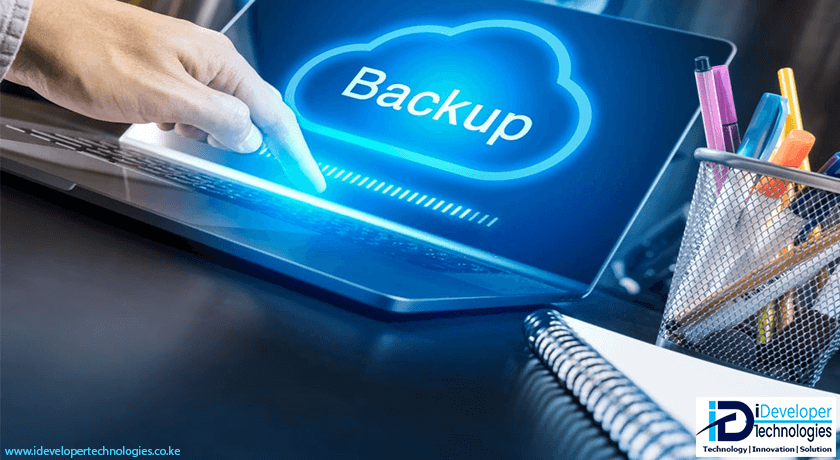It only takes a second to lose data. Losing important things like documents, photos, or business data is terrifying, whether it’s due to accidental deletion, hardware failure, theft, malware attacks, or a natural disaster. That’s why backing up your data is one of the best and most important digital habits you can adopt. The good news is that backing up your data is easier than ever, and you can do it securely on any device.
Understand the importance of backups
Before you get started, it’s crucial to understand the importance of backups. Problems can happen on any device, and new online threats like ransomware can block or corrupt your files in an instant. Backups are like a safety net; if your device gets hacked, you can still recover your important information. If you back up your files regularly, you can easily restore them without worry.
Decide what information you need to back up
First, make a list of important files and data that you can’t afford to lose. This could include your photos and videos, your finances, business documents, contacts, emails, and app data. Most people don’t need to back up everything; just focus on the files that are most important to their personal or professional lives. Backups are also more effective and faster if you keep your files in specific locations.
Choose the best backup method
If you need to back up your data, there are a few different ways to do it. Local backups use a flash drive or other storage device, while cloud backups use the Internet to store files online. Most people get better results with a combination of both. Cloud backups are easy to access and sync automatically, while local backups give you more control over your data and allow for faster recovery. Choose the option that best suits your budget.
Backing Up Your Windows PC
File History is built into Windows, but you can also use third-party tools. You can connect an external hard drive or set up a tool like OneDrive to back up your files to the cloud. To back up with File History, go to Settings, then Update & Security, then Backup. From there, you can add folders to back up and choose how often your system should be backed up. For automatic cloud syncing, you can also connect to cloud services like Google Drive or OneDrive.
Backing Up Your Mac
Apple’s Time Machine makes backing up easy. When you connect an external hard drive, your Mac will prompt you to use it for Time Machine backups. This tool automatically backs up every hour, every day, and every week. You can restore your entire system or just a portion of your files. You can back up your files, photos, and other personal items with iCloud and Time Machine. iCloud lets all your Apple devices share and store your data securely online.
Android devices that support backup
Google offers a powerful backup service for Android users. From the Settings menu, select System, then select Backup. You can set your phone to automatically back up app data, call logs, contacts, device settings, and text messages to your Google Account. Google Photos lets you back up as many photos and videos as you want to the cloud, but the actual available space depends on the size of your device. You can also add third-party apps or connect your device to a computer to move files that way.
You can back up iPhones and iPads
Apple users can back up their iOS devices using iCloud or iTunes (Finder in later versions of macOS). To open iCloud, go to Settings, tap your name, tap iCloud, then tap iCloud Backup. If you make sure backup is turned on, your device will automatically back up when it’s turned on and connected to Wi-Fi. You can also connect your device to a Mac or PC via Finder or iTunes to create a backup. This will copy all of the data and apps on your device.
Set up automatic backups
A major reason people lose data is that they often forget to back up. Automated backups can solve this problem by setting up a regular backup schedule that doesn’t require any human intervention. You can set most cloud services and backup apps to do this on a regular basis.
The two copies should be stored on two different media, such as the cloud and a physical drive. This approach protects against data loss, including hardware failure, theft, and fire. For added security, you can keep one backup on a flash drive at home and the other in the cloud.
Take strong security measures
If you don’t properly protect your backups, hackers and ransomware can exploit them. Always use a strong password for your cloud service and enable double security. Encrypt your private data before backing up. This is especially important if you use a portable drive that can be lost or stolen. Updating your backup software and devices can make them less vulnerable to known threats and keep you safe.
Consider using a cloud backup service
Many reputable cloud backup companies offer tools that are useful for both personal and business use. Depending on your needs, you can use services like Google Drive, Microsoft OneDrive, Dropbox, and iCloud. If you need a more advanced backup service, consider Backblaze, Carbonite, or IDrive. These services offer features like automatic backups, version history, and encrypted storage. Before choosing a plan, check the price and storage space, especially if you have a lot of data to back up.
What not to do when backing up
Don’t use old storage media like DVDs or USB drives, as they can deteriorate over time. Don’t rely on one place to store your backups, and don’t store them on the same computer as your original files. And don’t put off your first backup—many people do until it’s too late. Make backups part of your daily routine, not a one-time thing.
Today is the first day you start protecting your digital life
You don’t have to be a techie to back up your data; you just have to be persistent and plan ahead. With the right tools and good habits, you can keep your digital photos, work, and files safe. A good backup system gives you peace of mind and control in today’s uncertain digital world, whether you’re using a phone, laptop or PC. It’s never too late to take action and protect your important data.
Frequently Asked Questions (FAQ)
Question 1: How often should I back up my data?
Ideally, you should back up your important data daily or at least weekly. If you’re working on a critical project or storing sensitive data, daily automatic backups are the safest option.
Question 2: What storage is best for backups? Cloud storage or external hard drives?
Both have their advantages. Cloud storage offers convenience and remote access, while external hard drives offer physical control and fast recovery speeds. Using both together provides the best protection.
Question 3: Can I back up my phone to my computer?
Yes, you can connect your phone to your computer with a USB cable and manually transfer your photos, videos, and documents. Apps like iTunes (for iPhone) or Android File Transfer can help you with this.
Question 4: Is cloud backup safe?
Most cloud backup services use encryption and secure data centers to protect your files. For added security, use a strong password, enable two-factor authentication, and avoid using public Wi-Fi during backups.
Q5: How much cloud storage do I need?
That depends on how much data you want to back up. For simple documents and photos, 15-50GB may be sufficient. For large video files, system images, or backups of multiple devices, you may need 100GB or more.
Q6: What happens if my external backup drive fails?
That’s why redundancy is crucial. If your only backup is on a failed drive, you’ll lose your data. Always create multiple backups (ideally one local and one cloud backup) to ensure you can recover in the event of a disaster.
Q7: Does the backup service store multiple versions of your files?
Many backup tools, such as Time Machine, Backblaze, or IDrive, support versioning, which saves older versions of your files so you can roll back changes or restore deleted content.
Q8: Should I back up my entire system or just a portion of my files?
It depends on your needs. Selective backups can save time and storage space. Full system backups, also called “image backups,” are ideal for quick recovery if a device breaks or gets lost.



